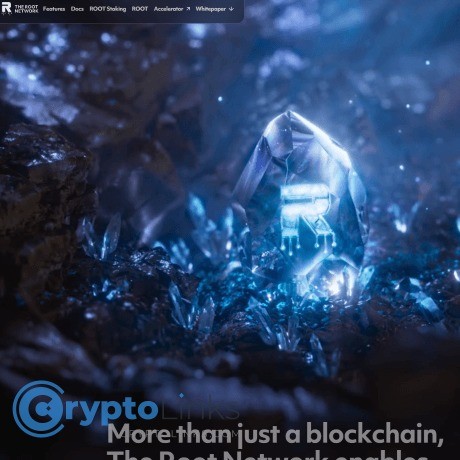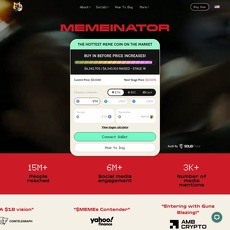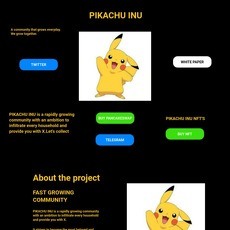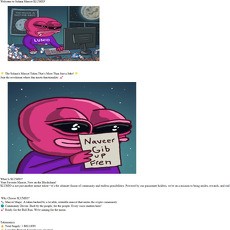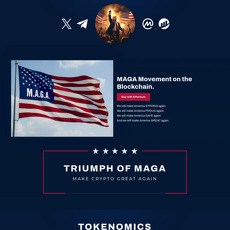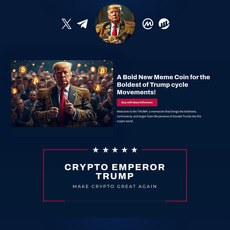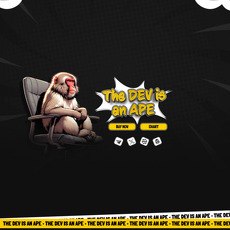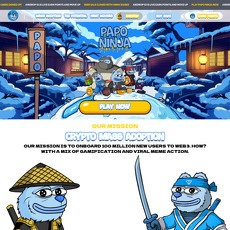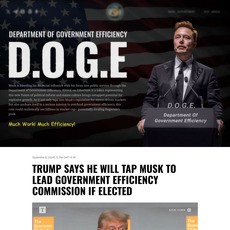The Root Network Review
The Root Network
therootnetwork.com
If your website is on the scam list and you think that you are not a scammer, contact us. After you provide us with all the proof that you are in Crypto World with good intentions, we will delist you. Usually, you get in this category because you are hiding your team, you have a bad reputation(you are tricking, deceiving, scamming people), and you haven't got a written project whitepaper or is a shitty one....
Their Official site text:
Skip to main content
The Root Network
Search...
Introduction
LEARN
Tokenomics
Features
Any-token Gas
EVM Smart Contract
Identity and Smart Wallet Protocols
Decentralized Exchange
On-Chain Assets
On-Chain Collectibles Protocol
Staking Protocol
Ethereum Bridge
XRPL Bridge
BUILD
Get Started
Connecting to The Root Network
Runtime API
Install Runtime API
Building with Runtime API
Runtime Pallets
Cookbook
EVM API
Install EVM API
Building with EVM API
Runtime Precompiles
Cookbook
External Links
Introduction
The Root Network
At the heart of the network infrastructure and protocols in the open metaverse is The Root Network (TRN).
The Root Network is the core blockchain infrastructure designed with a strong emphasis on user onboarding, aiming to improve the web3 experience. While initial onboarding in web3 lacks user-friendliness and safety features compared to web2, once users are onboarded, web3 offers superior privacy and flexibility in handling assets and data.
The Root Network has the following main elements:
Substrate Core
The Root Network uses Substrate at its core. Substrate has two major advantages: a large, well-established developer community, and the technical capability to customize the chain runtimes to optimize for user experience.
EVM Support for Smart Contracts
EVM runs within The Root Network protocol and is able to read Solidity smart contracts and execute them. This gives The Root Network developers access to smart contract functionality and also means that any code previously written for Ethereum can now run natively on The Root Network.
The EVM development ecosystem provides the broadest possible support for smart contracts and dapps, as well as compatibility with existing collections and collectibles in the NFT ecosystem.
Custom Runtimes
Our custom runtimes for Non-Fungible Assets, GAS Economy, Fungible Assets, Decentralized Exchange, Oracles and more, will provide the ingredients for creators to build applications and content without being a smart contract developer. They also provide a world-class onboarding experience.
Non-Fungible Assets Runtime
The Root Network NFT runtime provides a single unified network-wide experience for NFTs.
In other networks, NFTs exist at the individual contract layer. In The Root Network, NFTs exist in a core network runtime. This provides a common standard to build interoperability.
A uniform approach to minting, royalties and structuring , especially in the metadata and content formats, is essential for delivering the asset interoperability people imagine at the application layer.
The NFT runtime also has unique features like:
Network-wide royalty enforcement
Native multi-wallet split and tiered royalties for creators
Native NFT to NFT swaps
Native Static and cold minting options
Build NFT dapps without needing to develop or deploy smart contracts
Fees from the NFT runtime are distributed to network stakers and validators.
The Root Network also integrates the XRPL XLS-20 NFT standard as a runtime enabling compatibility with the XRPL NFT ecosystem and infrastructure.
Multi-Token Economy
The Root Network has a unique multi-token economy that enables the optimization of both gas and initial user onboarding.
In traditional single-token networks, high or unpredictable gas fees create significant challenges for users, impacting their overall experience. Additionally, the need to understand and obtain gas for transactions poses a considerable barrier for new users entering decentralized applications within web3.
The Root Network introduces a unique multi-token system where the primary network token, ROOT, is separated from the gas token, XRP, sourced from a partnership with Ripple and the XRPL. This separation enables efficient network operation and fosters liquidity for block rewards. The network addresses the user problem of complex gas acquisition by implementing an in-chain GAS fee exchange, allowing users to use the native token of the application or have developers pay fees on their behalf through liquidity pools. This innovative approach ensures smoother user onboarding without the necessity of comprehending the network's underlying economy or engaging with external exchanges.
Fungible Assets
Like the NFT runtime, users can create and launch standardized fungible tokens without having to deploy smart contract code, and compatible with XRPL fungible tokens. 1% of each new asset created in the Fungible Assets runtime is distributed to network node validators as a fee.
Decentralized Exchange
The network exchange runtime provides an in-chain DEX with a rich set of features that enable users and developers to trade collectibles, build liquidity pools and launch token price discovery, without having to deploy smart contract code. Exchange fees are collected by node validators. The In-chain DEX will also be integrated to the XRPL DEX to draw liquidity from to bootstrap the network liquidity.
Liquidity and Collectibles Bridges
The Root Network natively supports collectibles bridges through its general purpose bridging runtime. This means, for example, FLUF World assets on the ETH network or fungible and non-fungible assets on the XRPL can be bridged to The Root Network to gain additional utility. These two networks will be live at launch but others can be added as the ecosystem grows. The Root Network can also act as a hub for other Substrate-based and XRPL-based networks. This would apply to people who want to build interoperable content in the ecosystem, but require their own MetaApp chain.
Tokenomics
INFO
Please note tokenomics for The Root Network are subject to change in future.
Core Tokenomics
A high-level overview
Gas and network fees accumulate during the reward cycle (90 days).
These fees are transferred into The Vortex at the end of the cycle, and Vortex tokens are minted to reward participants based on their participation level.
Participation level is based on two things:
(a) The amount and duration of ROOT staked, and
(b) the work done as a validator, measured in Work points.
Vortex tokens can be unwound anytime, releasing the underlying tokens in The Vortex to the holder.
How are rewards distributed?
All rewards on The Root Network are distributed as Vortex tokens. Vortex tokens are tokens that can be unwound to release a corresponding percentage of tokens that are in The Vortex.
There are two types of rewards that contribute to The Vortex each reward cycle; Bootstrap Rewards and gas & network fees.
Bootstrap rewards
As outlined in the Futureverse whitepaper, Bootstrap rewards account for 10% of the total supply of ROOT tokens over 260 weeks to early backers and supporters.
This is distributed based on staked ROOT tokens by duration in the reward cycle.
At the end of the reward cycle, we calculate the Bootstrap Reward for each participant type, transfer it into the Vortex, mint Vortex tokens, and distribute it to participants.
Rewards from gas and network fees
This reward pool is based on gas and network fees collected. At the end of the reward cycle, these fees are used to mint Vortex tokens to reward participants.
30% of these Vortex tokens are distributed to stakers, nominators and validators based on their staked ROOT amount and duration staked relative to the total ROOT staked & duration by all participants.
The remaining 70% are distributed to validators and nominators based on their proportional Work points earned throughout the reward cycle.
How are the Vortex token mints calculated?
At the end of each reward cycle, the protocol determines the value of the tokens being added to the Vortex. It also divides the value of The Vortex itself by the number of Vortex Tokens in circulation. These numbers are used to calculate the amount of new Vortex tokens to mint and distribute as rewards to participants.
What are Work points? And how do they work?
Work points are earned by validators for doing work to complete blocks & transactions on the network.
As a nominator, you earn a percentage commission of Work points your selected validators earn.
At the end of each Era (24 hours), you will see an estimate of your Work points on the staking dashboard.
If you are a staker only (i.e., did not nominate a validator), you do not earn any Work points.
Work points do not directly translate to Vortex tokens. See above for how reward distribution is calculated.
How to Stake or Nominate?
Decentralized Exchange
The Root Network supports automated decentralized spot exchanges. It will allow users to:
Trade asset tokens instantly on the The Root Network blockchain
Send exchanged tokens directly to a 3rd party account within a single exchange transaction
The exchange will support all asset tokens active on The Root Network. This will include SYLO and ASTO tokens along with any generic assets created by new dapps on the network.
Next Steps
The decentralized exchange protocol is encapsulated in the dex pallet on-chain, to start utilizing this feature in your dapp, check out:
The pallet Runtime API References and how it works with the code examples.
The pallet EVM API References.
Staking Protocol
There are three levels of participation with increasing responsibility & reward profiles. See the table below for a high-level explanation of the different levels, rewards and risks. For early backers, as outlined in The Root Network whitepaper, we are rewarding up to 10% of the total supply of ROOT tokens over 260 weeks as part of our Bootstrap Rewards.
INFO
Please note tokenomics for The Root Network are subject to change in future.
Participation LevelRewardsRisks
Staker
Earn rewards based on ROOT staked by the duration of reward cycle.
Earn 0.024640657 ROOT per ROOT staked for the reward cycle. This is rewarded in Vortex tokens at the end of the 90-day cycle.
Staked ROOT is locked. You can unstake at any time with a 28-day cool-down period.
Note: withdrawing before the end of the reward cycle, will result in forfeit of rewards from that cycle.
Nominator
Earn based on ROOT staked by duration of the reward cycle.
Earn 0.049281314 ROOT per ROOT staked for the reward cycle. This is rewarded in Vortex tokens at the end of the 90-day cycle.
Also, earn based on work done by validators you nominated, based on commission percentage & amount of Work points accumulated during the reward cycle.
Additional to the notes from above, staked ROOT is exposed to slashing risk from the validators you nominate.
Being a nominator is not set and forget. Nominations should be periodically monitored.
Validator
Earn based on ROOT staked by duration of the reward cycle.
Earn 0.073921971 ROOT per ROOT staked for the reward cycle. This is rewarded in Vortex tokens at the end of the 90 day cycle.
Earn based on work done as a validator, less commission you pay to nominators for selecting you.
Your staked ROOT is exposed to slashing risks.
Investment and skills required to set up, run and maintain a validator node.
All participants are rewarded at the end of the 90-day reward cycle, and you must still be staking in at the end of the 90-day reward cycle to receive your rewards.
Note that you can either stake or nominate from the same wallet.
Staking
Stake your ROOT tokens for a reward cycle and choose not to nominate any validators. This is a low-risk method of participating.
By not taking on slashing risks for a nominator, your reduced risk is paired with reward proportional to your risk.
You can stake at any point of the reward cycle. Your rewards are prorated by the duration you staked.
How to stake? Refer to this section.
Nominating
This is the next level of participation. To become nominator, you need to stake at least 25 ROOT.
During the staking flow, you choose to nominate one or more validators. You can nominate at any point of the reward cycle. Your rewards are prorated by the duration you staked.
In each Era (24 hours), the protocol elects validators to complete blocks and transactions, earning them Work points. When you nominate multiple validators, you increase your chances of earning rewards from elected validators. The nomination algorithm automagically determines how best to allocate your nominated ROOT equally across active and earning validators for each Era. It's worth noting that most nominators will likely see only one active and earning validator during an Era. That means all your staked ROOT will be nominated to the one active validator.
Note that some validators may become oversubscribed. If this happens, only the top 256 nominators (sorted by the amount of ROOT nominated) will earn rewards. Oversubscribed validators will have badge clearly indicating their status. You can also exclude them by clicking filter and selecting exclude oversubscribed validators.
Note that The Root Network initially runs all validator nodes. External nodes will be available in near future.
Slashed ROOT is transferred to The Root Network Treasury.
Nominator Status
On the staking dashboard, when you nominate a validator (or multiple validators), you will see one of three statuses:
Inactive: This means that the validator you nominated is not nominating in this current Era (if you’ve nominated several validators, all but one will show like this).
Waiting: This is the status you will see when you first nominate a validator or when you change nominations. This means the nomination won’t be confirmed until the next Era.
Active and earning: This means the validator was chosen, and your nomination actively supports it in this Era.
Validating
Becoming a validator is not available, but it's coming soon.
We will add more details as this functionality becomes available.
Slashing
In The Root Network, slashing is a pivotal tool to counteract harmful actions by imposing penalties on validators acting counter to the network's welfare and that of their backers (nominators). Such deterrents ensure that validators, driven by the potential loss of their staked tokens, are incentivized to act favorably for the network.
A validator's misstep or adversarial conduct triggers the slashing mechanism. Such behaviors could range from prolonged unavailability, like being offline with numerous others, launching attacks on the network, or employing altered software. The magnitude of the slashed amount is directly proportional to the gravity of the misdeed. Slashed ROOT will go to The Root Network Treasury.
Minor offenses (like a validator being offline for a prolonged period) will not incur slashing. They will stop validating until the issue is fixed and they re-declare their intention to validate. This only results in slashing if 10% or more of active validators simultaneously go offline (this could mean there’s an attack on the network).
Estimated Vortex Token Reward
This number is based on a range of factors, including ROOT staked, duration staked and work points accumulated as a proportion of all other participants. As well as the number, value and type of tokens collected in The Vortex during the reward cycle. These numbers are dynamic and frequently change.
As a result, the estimated number should be used as an indication of your estimated Vortex tokens rewards for this reward cycle.
This estimate should also be considered on a longer timescale as it will fluctuate over the course of a reward cycle as you earn work points and other rewards at different rates during each Era depending on the range of factors mentioned above.
Glossary
TermDefinition
Bootstrap Rewards
As outlined in The Root Network whitepaper, we reward up to 10% of the total supply of ROOT tokens over 260 weeks as a bootstrap to early backers.
Stakers, nominators, and validators are rewarded ROOT based on ROOT staked by duration for the reward cycle. Rewarded ROOT is transferred into The Vortex and paid out in Vortex tokens at the end of the reward cycle.
EraA 24-hour period. For each Era, validators are selected by voting to do the work.
Network FeesFees from DEX, marketplaces, communication protocols, material world and other experiences, and paying gas on the network.
Network TokensThese are tokens used on the network to pay gas and network fees.
NominatorA participant who stakes ROOT and chooses to nominate one or more validators. This is a higher risk (see Slashing) and comes with a higher reward relative to staking.
Reward CycleA 90-day period. At the end of the reward cycle, participants are rewarded proportionally to their participation level.
ROOTThe token used to power The Root Network.
SlashingThis is the risk validators, and nominators take on. This happens when a validator misbehaves eg, the validator node becomes unavailable. Slashed ROOT is transferred to the Treasury.
StakerA participant who stakes ROOT and doesn’t nominate a validator. This is lower risk and comes with lower rewards relative to nominating.
ValidatorFor the more technically-minded participants. Validators forge blocks and complete transactions on the network. Requires technical knowledge and infrastructure cost and comes with higher rewards for taking on additional risks. Becoming a validator is not currently available.
The Vortex
This is where all fees collected on the network are stored. This also includes the ROOT from Bootstrap Rewards.
Tokens in The Vortex should generally go up. It decreases when people unroll their Vortex token. In this case, they get their proportion from The Vortex.
e.g. if you unroll 10 Vortex tokens and there are 100 Vortex tokens in circulation, you have 10% of the market supply. By unrolling, you get back 10% of all tokens in The Vortex at that time.
Vortex Tokens
Participants on The Root Network are rewarded with Vortex tokens.
Vortex tokens are backed by the underlying tokens in The Vortex.
They are tradable on DEX, assuming there is a liquidity pool with a pair of your choice.
Work Points
Work points are earned by validators for doing work to complete blocks & transactions on the network.
As a nominator, you earn a percentage commission of Work points your selected validators earn.
Previous

